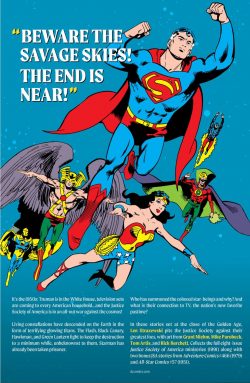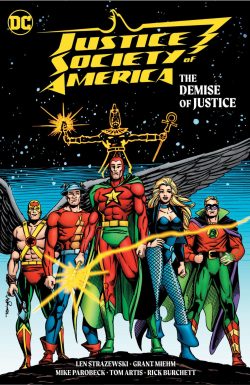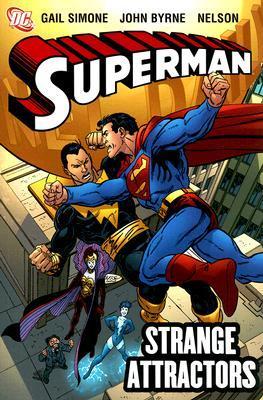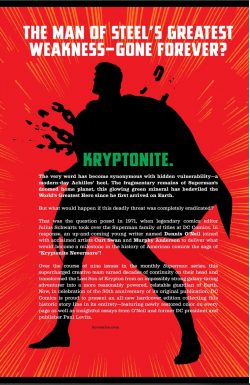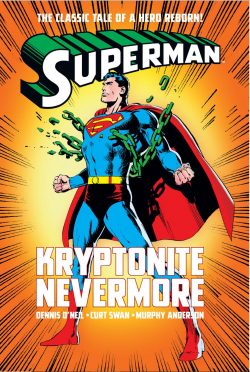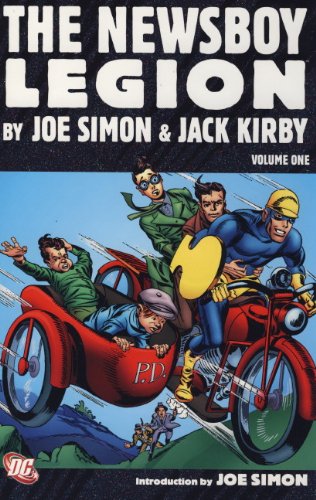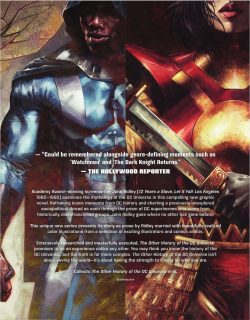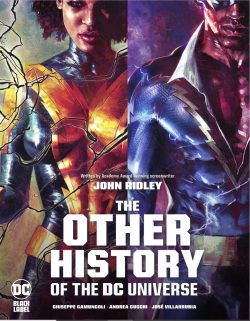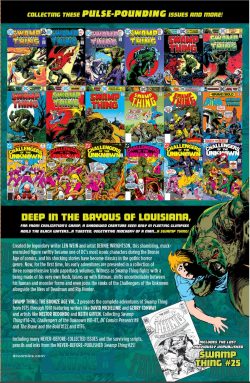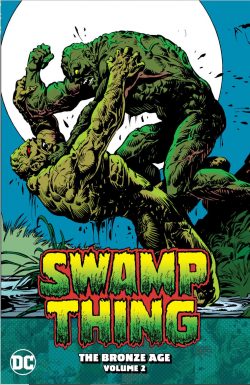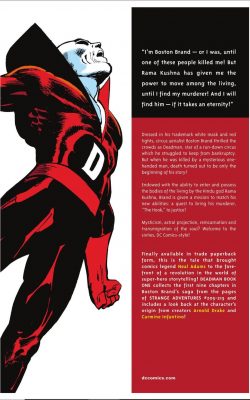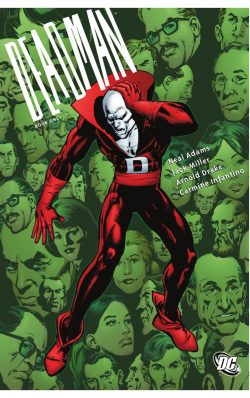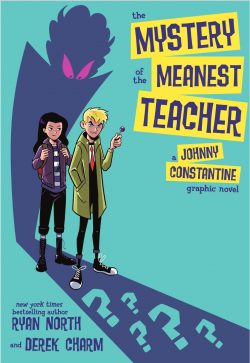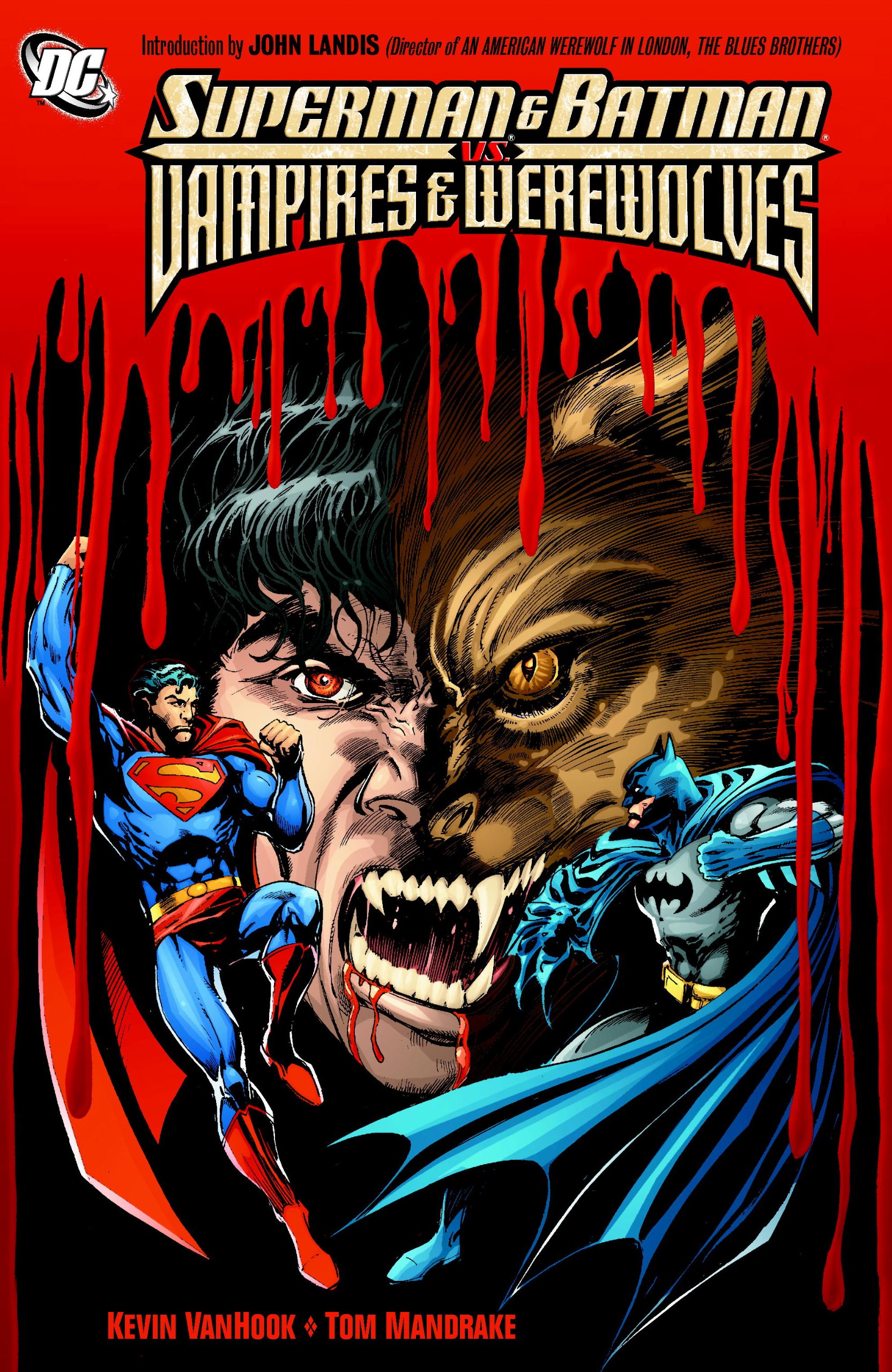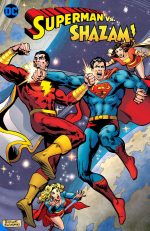
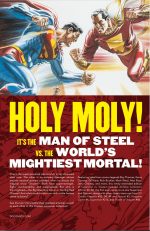
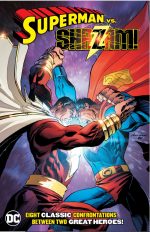
By Gerry Conway, Roy Thomas, Julie Schwartz, Paul Kupperberg, Joey Cavalieri, Mark Waid, Jerry Ordway, Judd Winick, Rich Buckler, Gil Kane, Alex Ross, Ian Churchill & various (DC Comics)
ISBN: 978-1-7795-0909-3 (TPB/Digital edition)
Win’s Christmas Gift Recommendation: Golden Grudge-Match Magic… 8/10
Superman debuted in Action Comics #1 in the summer of 1938. Created by Jerry Siegel & Joe Shuster, it proved extremely popular across many disparate media and sparked a new kind of hero and story form. You’re here right now because of him…
Another one of the most venerated and loved characters in American comics was created by Bill Parker & Charles Clarence Beck for Fawcett Publications as part of the wave of opportunistic creativity that followed that successful launch of Superman. Although there were many similarities in the early years, the “Big Red Cheese” moved swiftly and solidly into the area of light entertainment and even broad comedy, whilst as the 1940s progressed the Man of Tomorrow increasingly left whimsy behind in favour of action and drama.
Homeless orphan and thoroughly good kid Billy Batson was selected by an ancient wizard to battle injustice and subsequently granted the powers of six gods and mythical heroes. By speaking aloud the wizard’s name – itself an acronym for the six patrons Solomon, Hercules, Atlas, Zeus, Achilles and Mercury – Billy would transform from scrawny boy to brawny (adult) hero Captain Marvel.
At the height of his popularity, Captain Marvel hugely outsold Superman but, as the decade progressed and tastes changed, sales slowed. An infamous court case begun in 1941 by National Comics citing copyright infringement was settled and like so many other superheroes, the Captain disappeared, becoming a fond memory for older fans. A big syndication success, he was missed all over the world…
In Britain, where an English reprint line had run for many years, creator/publisher Mick Anglo had an avid audience and no product, and transformed Captain Marvel into atomic age hero Marvelman, continuing to thrill readers into the early 1960s.
Decades later, as America lived through another superhero boom-&-bust, the 1970s dawned with a shrinking industry and wide variety of comics genres servicing a base that was increasingly founded on collectors and fans rather than casual or impulse buyers. National Periodicals/DC Comics needed sales and were prepared to look for them in unusual places.
Since the court settlement with Fawcett in 1953 they had secured the rights to Captain Marvel and his spin-off Family. Now, though the name itself had been taken up by Marvel Comics (via a circuitous and quirky robotic character published by Carl Burgos and M.F. Publications in 1967), the publishing monolith decided to tap into that discriminating if aging fanbase.
In 1973, riding a wave of national nostalgia on TV and in the movies, DC brought back the entire beloved cast of the Captain Marvel crew in their own kinder, weirder universe. To circumvent the intellectual property clash, they named the new title Shazam! (…With One Magic Word…) after the memorable trigger phrase used by myriad Marvels to transform to and from mortal form and a word that had already entered the American language due to the success of the franchise the first time around.
Although the fortunes of Billy and Co have waxed and waned, one thing never did – the primal joy of all fans everywhere as they asked the eternal question of the golden age sales competitors: “Who would win if…?”
This rather hastily updated and rereleased volume is based on a 2013 edition but has come back presumably because it features so many stories starring surprise modern movie star Black Adam and gathers All-New Collectors’ Edition C-58, DC Comics Presents #33-34 & 49, DC Comics Presents Annual #3, Kingdom Come #4, Superman #216 and Power of Shazam #46 spanning 1978 to 2005. It’s by no means a comprehensive compilation with some notable omissions – such as my personal favourite ‘Make Way for Captain Thunder!’ from Superman # 276 (June 1974) – but there is plenty here to whet appetites and tantalise fading memories if you’re nearer the age of the Wizard than Billy…
The action begins ‘When Earths Collide’ as seen in May 1978’s tabloid-sized special All-New Collectors’ Edition C-58 as crafted by Gerry Conway, Rich Buckler & Dick Giordano. At this juncture, prior to Crisis on Infinite Earths, the Shazam Family lived on alternate Earth-S whilst the regular DC pantheon inhabited the universe dubbed Earth-One.
This epic yarn sees ancient Martian sorcerer Karmang the Evil attempt to merge both worlds by harvesting the energy of cataclysmic combat, to which end he resurrects long-dead Shazam-empowered Black Adam and the mystic Quarmer being that haunted Superman as the Sand Thing.
As they stalk and provoke the heroes, Karmang curses the champions with addictive rage, compelling them to attack each other and liberate the super-forces Karmang craves. Thankfully, Lois Lane, Jimmy Olsen and Supergirl join Mary Marvel and an unsuspected secret ally to sabotage the scheme before the Big Blue Boy Scout and Big Red Cheese pummel each other and the worlds out of existence…
Conway, Roy Thomas, Buckler & Giordano then craft a 2-part epic in DC Comics Presents #33 and 34 (May & June 1981) as ‘Man and Supermarvel’ finds the Action Ace and Good Captain helplessly swapping powers, costumes and Earths, thanks to the mirthlessly manic machinations of Fifth dimensional imp Mr. Mxyzptlk and malevolent alien worm Mr. Mind.
Despite the intervention of Mary Marvel and Captain Marvel Junior in the concluding issue, the villains’ sinister manipulations allow antediluvian revenant King Kull to become ‘The Beast-Man that Shouted ‘Hate’ at the Heart of the U.N.’ (Thomas, Buckler & Giordano).
The consequent confrontational clash rumbles across myriad dimensions and only goes the heroes’ way after they stumble upon the garish homeworld of Lepine Legend Hoppy the Captain Marvel Bunny…
Black Adam takes centre stage in DC Comics Presents #49 (September 1982) as Thomas, Paul Kupperberg, Buckler & John Calnan detail how the troubled Billy Batson of Earth One is targeted by the immortal wizard in ‘Superman and Shazam!’
From his citadel in the Rock of Eternity, the mage seeks to empower a child and create a Marvel on Superman’s adopted homeworld. However, when he tries to enlist the Man of Steel’s assistance to create another Captain Marvel, everything goes badly wrong and the Earth-S original has to step in from his own world to stop the opportunistic depredations of his devil-hearted predecessor Teth Adam…
Captain Marvel’s blend of charm, drama and whimsy made and remade many fans, even prompting a live action TV series, but never quite enough to keep the series going in such economically trying times. Despite cancellation, however, the series persevered in back-up slots in other magazines and the character still made the occasional bombastic guest-appearance such as 1984’s DC Comics Presents Annual #3.
As delivered by Thomas, Julie Schwartz, Joey Cavalieri and illustrator Gil Kane, ‘With One Magic Word’ is a cracking and witty 40-page romp which sees the Earth-S Doctor Sivana appropriate the mystic lightning that empowers Billy, leading to a monolithic multidimensional melee involving not just the Marvel Family but also the Supermen of both Earths One and Two (this was mere months before Crisis on Infinite Earths lumped all these heroes onto one terribly beleaguered and crowded world) before peace, sanity and the status quo was restored…
Envisaged and designed by artist Alex Ross, Kingdom Come was originally released as a 4-issue Prestige Format miniseries in 1996 to rapturous acclaim and numerous awards and accolades. Although set in the future and an “imaginary story” released under the Elseworlds imprint, it almost immediately began to affect the company’s mainstream continuity.
Set approximately twenty years ahead, the grandiose saga detailed a tragic failure and subsequent loss of Faith for Superman and how his attempt to redeem himself almost caused an even greater and ultimate apocalypse.
Scripted by Mark Waid, the events are seen through the eyes and actions of Dantean witness Norman McCay, an aging cleric co-opted by Divine Agent of Wrath The Spectre after the pastor officiated at the last rites of dying superhero Wesley Dodds. As The Sandman, Dodds had been cursed with precognitive dreams which compelled him to act as an agent of justice.
This is a world where metahumans have proliferated: spawning a sub-culture of constant, violent clashes between the latest generation of costumed villains and vigilantes, all uncaring of collateral damage they daily inflict on mere mortals around and in all ways beneath them.
The preacher sees a final crisis coming… but feels helpless until the Spectre takes him on a bewildering voyage of unfolding events, McCay must act as the ghost’s human perspective as the Spirit of Vengeance prepares to pass judgement on Humanity…
Seen here is the concluding chapter: a staggering battle of superpowers, one last moment of salvation and a second chance for humanity during a calamitous ‘Never-Ending Battle’…
At first Superman’s plans seemed blessed to succeed, with many erstwhile threats flocking to his banner and doctrinaire rules of discipline, but as ever there are self-serving villains with their own agendas. Lex Luthor had organised a cabal of like-minded compatriots such as Vandal Savage, Catwoman and Kobra – a “Mankind Liberation Front”. With Captain Marvel as their utterly corrupted slave, this group is determined the super-freaks will not win, but salvation hinges on the outcome of their tool’s clash with a despondent, embittered Man of Steel…
The emotional trauma is heaped on Billy in Power of Shazam #46 (February 1999) as he reels from his failure to stop an atomic atrocity that killed many of his friends. Deeply traumatised, he at first ignores the depredations of Black Adam and allows Superman to fight his foe in Fawcett City, but when turns when pushed to far unleashing his ‘Absolute Power’ and lashing out at family, friends and foes alike in a powerful and disturbing tale by Jerry Ordway & Giordano…
The Fights ‘n’ Tights furore ends here with another single chapter from a greater epic as Superman #216 (June 2005, by Judd Winick, Ian Churchill & Norm Rapmund) sees the heir of Shazam battling a Man of Steel controlled by rage-filled Demon of Darkness Eclipso in ‘Lightning Strikes Twice Part Three’ which was part of the build up to the Acts of Vengeance storyline…
Comics are such an interconnected, overlapping and entwined medium these days that I suppose my crusty old git reservations against incomplete stories can be ignored by most readers. That said, the material here is spectacular and thrilling and should gratify and satisfy new readers generated by movies or even word of mouth. With covers by Buckler, Giordano, Kane, Ross, Churchill & Dave Stewart and Ordway, this tome offers a quick glimpse of what’s great and topical, and for those in need of more there are entire worlds waiting for you to find them…
© 1978, 1981, 1982, 1984, 1996, 1999, 2005, 2013, 2018, 2021 DC Comics. All Rights Reserved.

